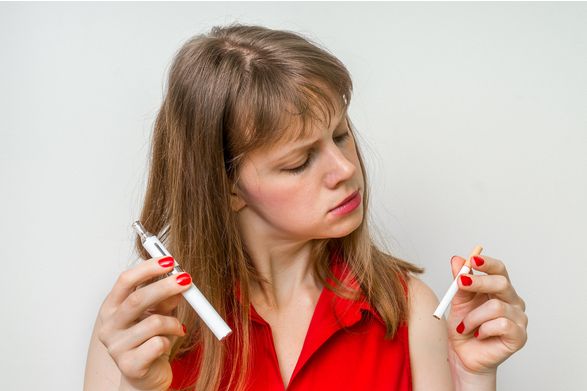The usually quiet first lady spoke for millions of mothers when she expressed her concern about growing rates of teen vaping. Indeed, Americans have reason for concern: rates of teen vaping continue to inch up and there have been alarming reports of fatal respiratory illnesses associated with vaping.
But before banning e-cigarettes or flavored vaping liquid, as the president has threatened, Americans—particularly concerned moms of teens—should consider the bigger public health picture and the risks teens face.
Traditional smoking—especially among teens–is going down. This is likely in part because kids who want to experiment with smoking are trying vaping instead of traditional, combustible cigarettes. And while many teens do vape, many don’t do it habitually and others vape nicotine-free vape liquid, which means they’re not vulnerable to addiction. Still, everyone wishes kids would abstain entirely from smoking anything, but if teens are going to experiment, it’s better to do so with something that’s less addictive and less harmful.
And vaping is far less harmful. E-cigarettes have been in the marketplace for more than a decade and in that time, the broad consensus is that vaping is much less harmful than traditional cigarette smoking. In 2015, Public Health England declared e-cigarettes to be 95 percent less harmful than traditional cigarettes. Even former FDA administrator (and harsh critic of vaping) Scott Gottlieb has recognized their efficacy in helping smokers quit, saying his agency “…saw them as a less harmful alternative to cancer-causing tobacco for addicted adult smokers.”
For those who switch from cigarettes to vaping, the health outcomes are markedly positive. These positive health outcomes are so good, in fact, that the UK’s National Health Service actually encourages people to switch from traditional cigarettes to e-cigarette devices.
In the United States, the Food and Drug Administration actively regulates the e-cigarette industry. To ensure their safety, the agency has conducted thousands of inspections where these devices and e-liquids are manufactured and routinely inspects independently run vape shops. The agency regularly publishes manufacturing guidance and has consistently sought product removals if something is deemed unsafe.
The biggest problems associated with vaping arise from black market vaping products, which are unapproved and can be dangerous. Ongoing investigations into recent deaths linked to vaping suggest these incidents are the result of contaminated ingredients and the use of tetrahydrocannabinol (THC) cartridges that are being sold on the black market. Public officials ought to aggressively seek to keep these and other illegal products off the street.
However, banning products that are heavily regulated and FDA-approved won’t solve the problem. It will only make it worse: Banning safe vaping products will push all e-cigarette users into the black market, making injuries and deaths more likely.
Access to vape products isn’t just about teens, but is an issue of great importance to the millions of adults for whom vaping is their best cessation hope. In fact, a recent study by British researchers published by the New England Journal of Medicine found e-cigarettes are twice as effective in helping smokers quit as nicotine patches and gum.
Contrary to the narrative that only teens use “kid-friendly” vape flavors, a recent study of more than 20,000 adult e-cigarette users found they prefer fruit and sweet flavored vape liquid much more than traditional tobacco flavored vape liquid. Banning flavors will negatively impact current smokers desperate to quit.
Undoubtedly, calls to ban vaping and flavored vape liquids resonate with millions of parents—like the first lady—who simply want to protect their kids from any dangerous substance. But vaping bans are unlikely to improve teens’ health or discourage smoking. Instead they would encourage the use of more addictive and harmful traditional cigarettes and nurture an already thriving black market that is supplying dangerous products to unwitting consumers.
More importantly, it would be a blow to the significant and positive public health progress being made because of these innovative products.


